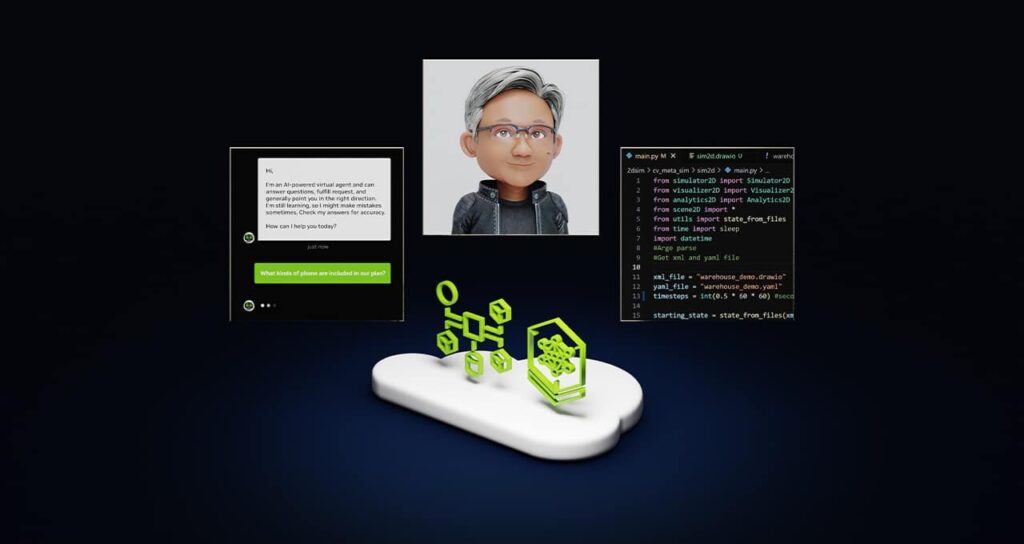Red Hat and NTT support AI analysis at the edge with IOWN technologies
Red Hat and NTT Corporation, in collaboration with NVIDIA and Fujitsu, have jointly developed a solution to enhance and extend the potential for real-time AI data analysis at the edge.
As part of the Innovative Optical and Wireless Network (IOWN) initiative, the solution has received an IOWN Global Forum’s proof of concept (PoC) recognition for its real-world viability and use cases – reducing power consumption and latency.
With AI, sensing technology and networking innovation continuing to advance, using AI analysis to assess and triage input at the network’s edge could be critical, especially as data sources expand almost daily.
But using AI analysis on a large scale can be slow and complex, associated with higher maintenance costs and software upkeep to onboard new AI models and additional hardware. With edge computing capabilities emerging in more remote locations, AI analysis can be placed closer to the sensors, reducing latency and increasing bandwidth.
The proof of concept assessed a real-time AI analysis platform with Yokosuka City – as the sensor installation base – and Musashino City – as the remote data center – both connected via APN. As a result, when a large number of cameras were accommodated, the latency required to aggregate sensor data for AI analysis was reduced by 60 percent compared to conventional AI inference workloads.
The IOWN PoC testing also demonstrated that the power consumption required for AI analysis for each camera at the edge could be reduced by 40 percent from conventional technology.
This solution is poised to set the stage for intelligent AI-enabled technologies that will help businesses sustainably scale while reducing overhead associated with collecting large amounts of data; enhancing data collection that can be shared between metropolitan areas and remote data centers; and the ability to use locally available and potentially renewable energy, such as solar or wind.
Chris Wright, chief technology officers and senior vice president of global engineering at Red Hat and board director of IOWN Global Forum, said: “Over the last few years, we’ve worked as part of IOWN Global Forum to set the stage for AI innovation powered by open source and deliver technologies that help us make smarter choices for the future.
“This is important and exciting work, and these results help prove that we can build AI-enabled solutions that are sustainable and innovative for businesses across the globe. With Red Hat OpenShift, we can help NTT provide large-scale AI data analysis in real time and without limitations.”
Red Hat and Tech Mahindra enhance hybrid cloud flexibility for Telco workloads
Red Hat and Tech Mahindra have also announced a collaboration to make it easier for telecommunications service providers to accelerate and manage 5G adoption and deployments across the hybrid cloud.
Tech Mahindra’s Multi-mode Companion Cloud with Red Hat OpenShift are set to support multiple network use cases, spanning RAN, edge computing, transport and 5G core, to extend capabilities across hybrid cloud environments with integrated automation and orchestration capabilities.
The duo has combined forces to deliver increased flexibility to roll out updates and streamline network provisioning across cloud infrastructure and to reduce costs by enabling service providers to get the most out of existing cloud budgets.
Manish Mangal, global business head, network services and 5G, Tech Mahindra, said: “As we embrace the era of Artificial Intelligence, telecom networks are on the brink of a significant evolution.”
Mangal added: “At Tech Mahindra, we foresee a future where the synergy of AI-driven technologies, coupled with strategic partnerships, drives transformative operations for service provider networks, with our Multi-mode Companion Cloud leading the way.”
ServiceNow and NVIDIA expand collaboration with Telco GenAI solutions
ServiceNow and NVIDIA have announced that they are broadening their collaboration with the introduction of Telco‑specific generative AI solutions to elevate service experiences.
The first solution, Now Assist for Telecommunications Service Management (TSM), is built on the Now Platform and uses NVIDIA AI to help boost agent productivity, speed time to resolution and enhance customer experiences.
With Telcos looking to reduce costs and uncover new business opportunities, they are turning to AI and automation.
“GenAI is a game‑changer for Telcos looking to boost productivity, improve customer experiences and drive cost-savings with its ability to learn and improve with each use,” said Rohit Batra, general manager and vice president for telecom, media and tech at ServiceNow. “Together, ServiceNow and NVIDIA will help Telcos realize unprecedented business value and impact, fast. This is just the beginning of a large‑scale transformation for the industry, and we’re excited to be at the forefront.”
The generative AI solutions are poised to help deliver better customer care and service assurance with GenAI being able to summarize case activity, work notes and customer interactions to guide agents with next best actions. This can help agents serve customers quickly and focus on complex queries that require personalized attention, leading to better overall customer experiences.
To help with service assurance, GenAI can also decipher technical jargon, distill complex information into clear summaries designed to speed time to resolution, drive cost savings and improve customer experiences.
Lenovo backs Telco transformation with next-gen edge AI innovations
At MWC 2024, Lenovo unveiled next-generation Integrated Edge AI Solutions for Telco to help enterprises go beyond the data center to harness vast bodies of data at the far edge for transformative AI applications at scale, while reducing energy consumption.
The innovations are part of a comprehensive pocket-to-cloud portfolio of Lenovo hybrid AI solutions designed to simplify the path to intelligent transformation for all industries.
As the telecom industry continues its dramatic evolution to enable the rollout of 5G and an AI-powered future, innovations in IT networks, cloud infrastructure and edge computing are critical to connecting today’s digital economy. Edge computing allows businesses to analyze data in real-time, enabling faster actionable insights for more efficient operations and services.
As part of it, Lenovo has announced a new multi-cloud edge computing architecture with Telefonica to tackle mission critical applications for smart cities, making it simple to leverage data throughout city streets in a wide array of AI use cases. This includes using video analytics and computer vision to identify smoke and fire, support public safety and improve emergency response times.
“Together with Lenovo, Telefonica is demonstrating how edge AI technologies can be used in a multi-cloud environment in everyday life, seamlessly bringing the power of the cloud to the scene of data and opening the door to new applications, like using computer vision at the edge for smoke and fire detection in order to reduce emergency response time,” said Felipe Jose Vicens Gonzalez, hardware and virtualization infrastructure, cloud and infrastructure for Telefónica Global IT.
“With Lenovo edge-to-cloud AI infrastructure, we are reimagining the possibilities and building the future of telecommunications.”




